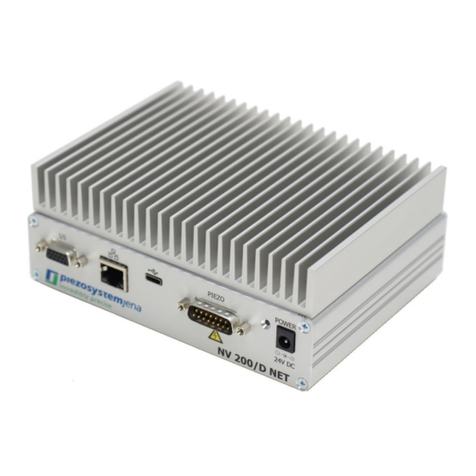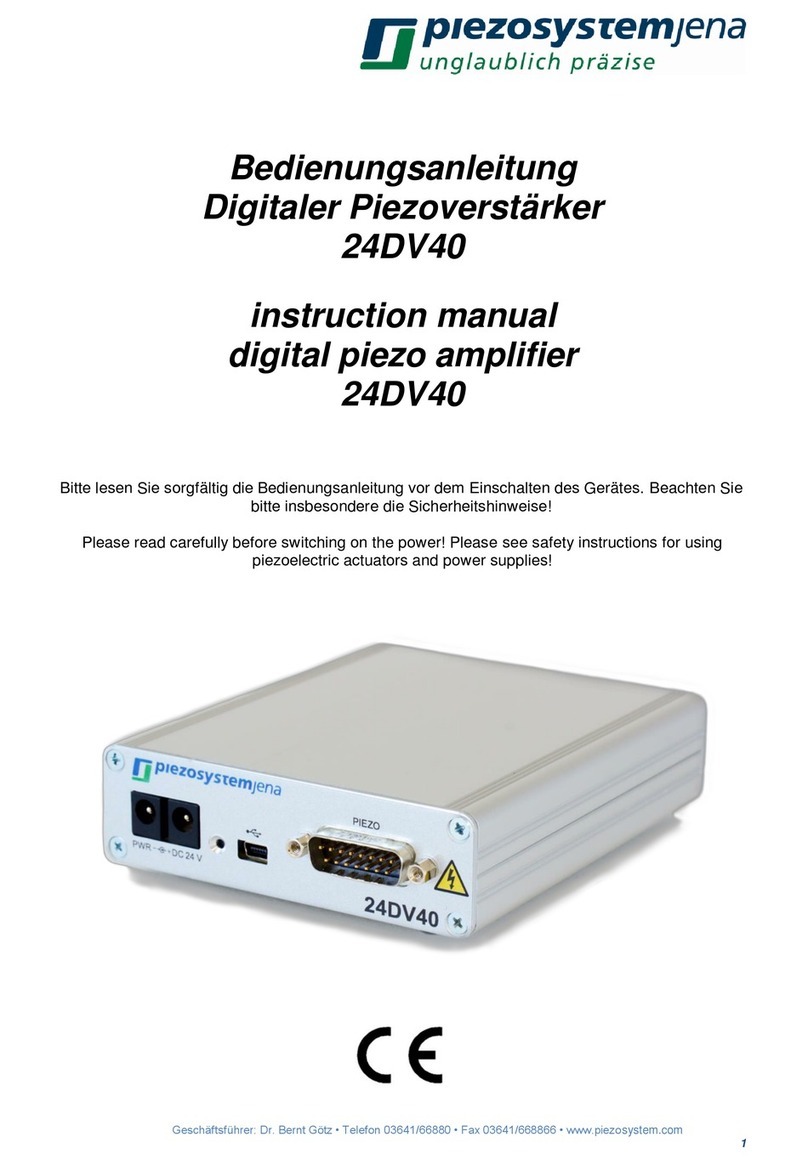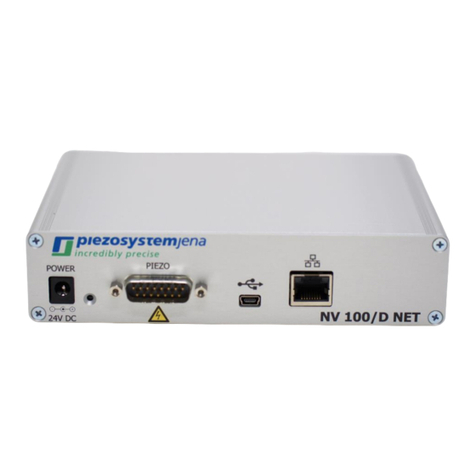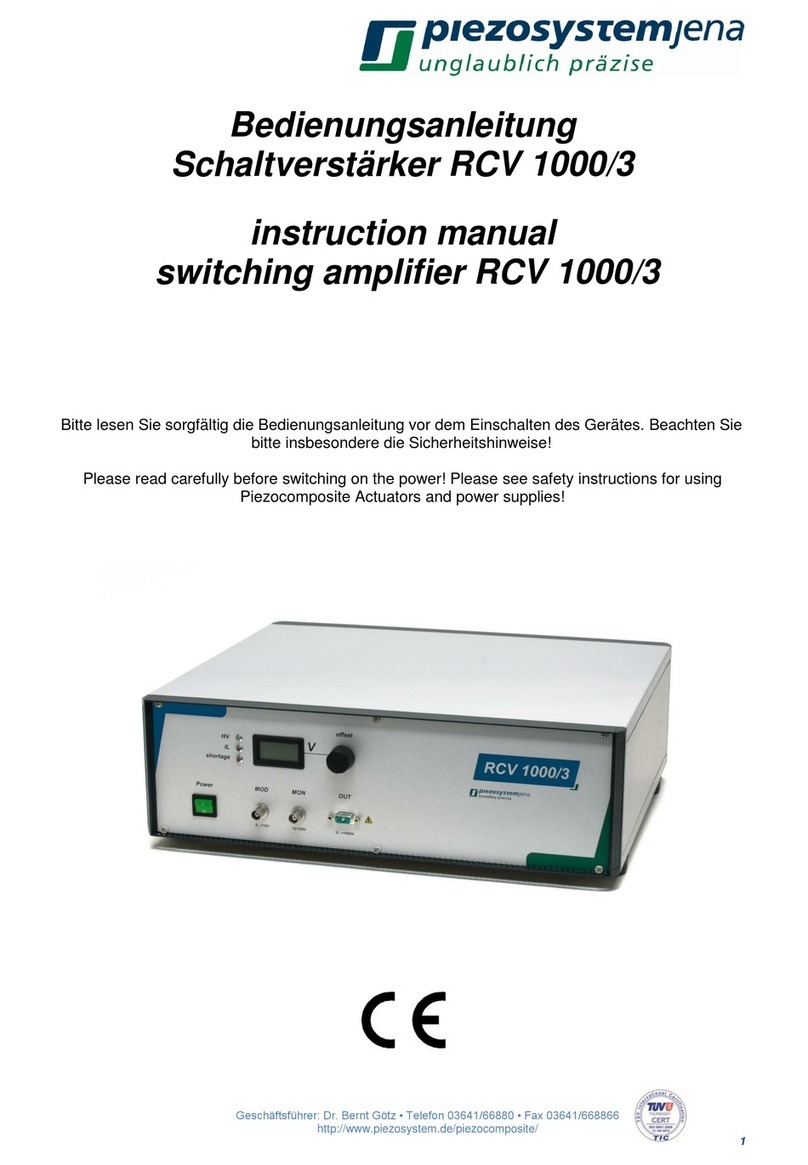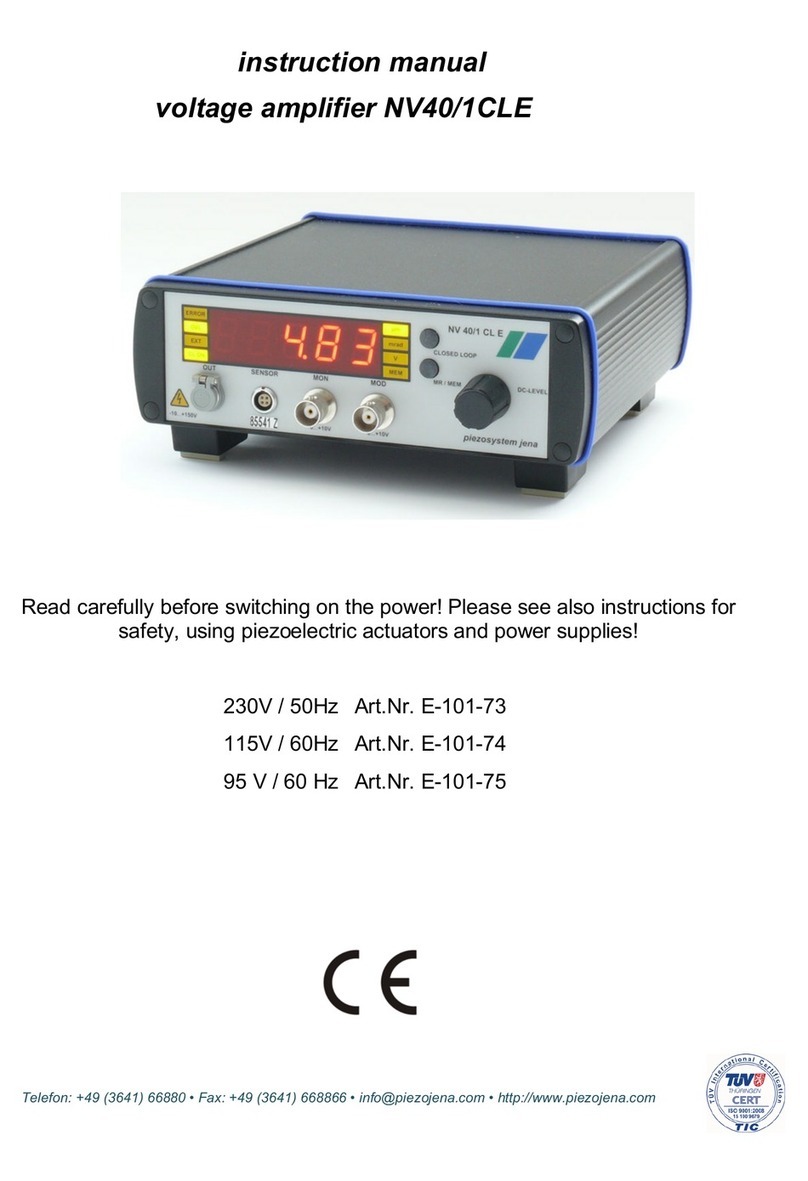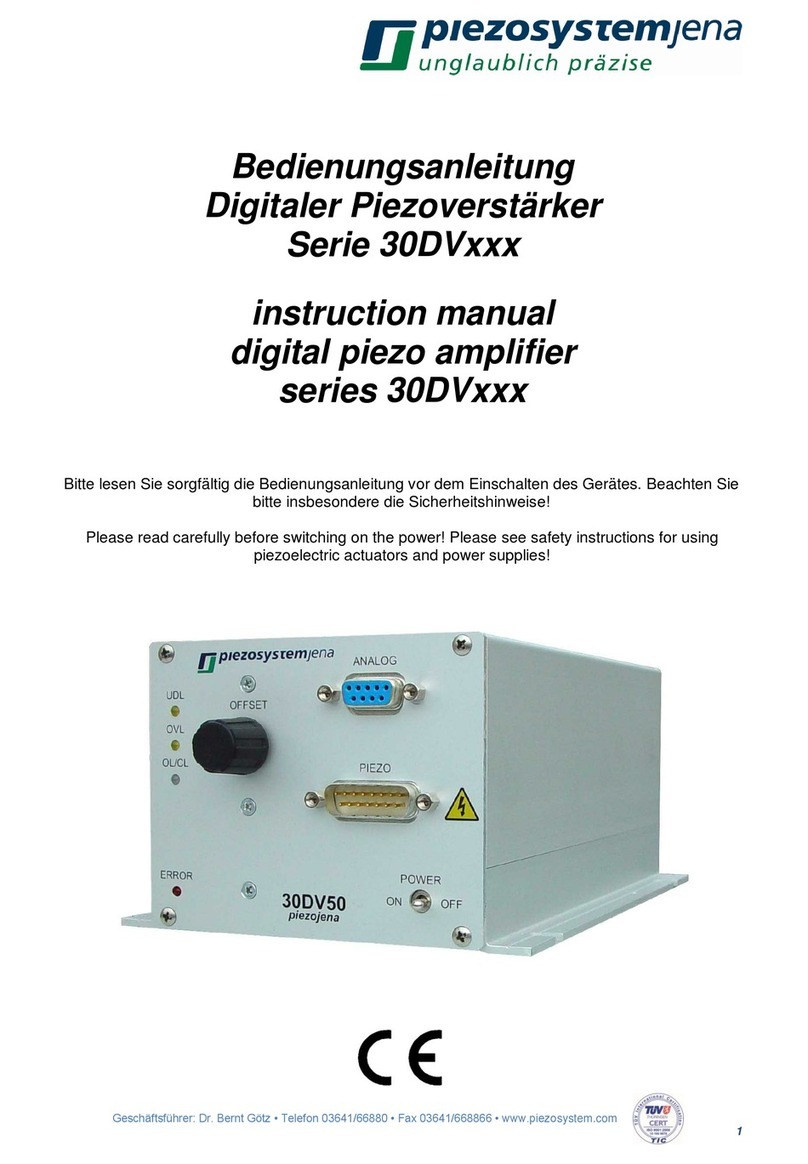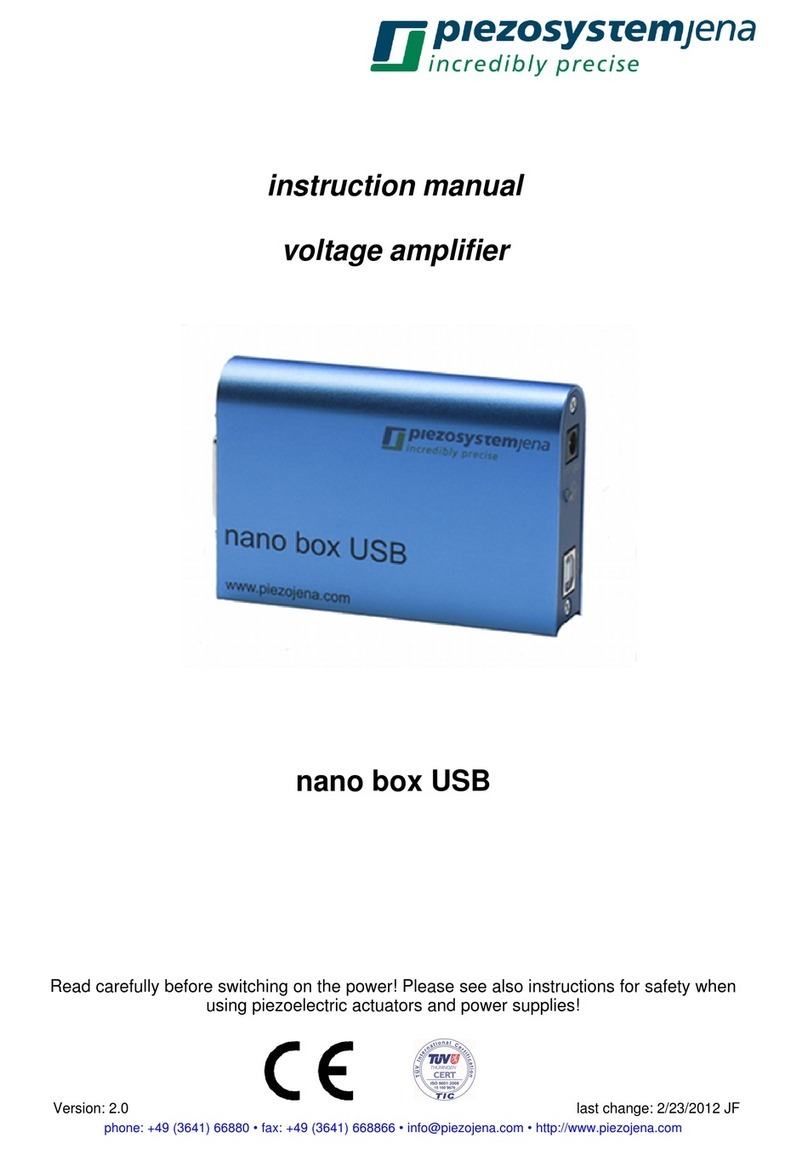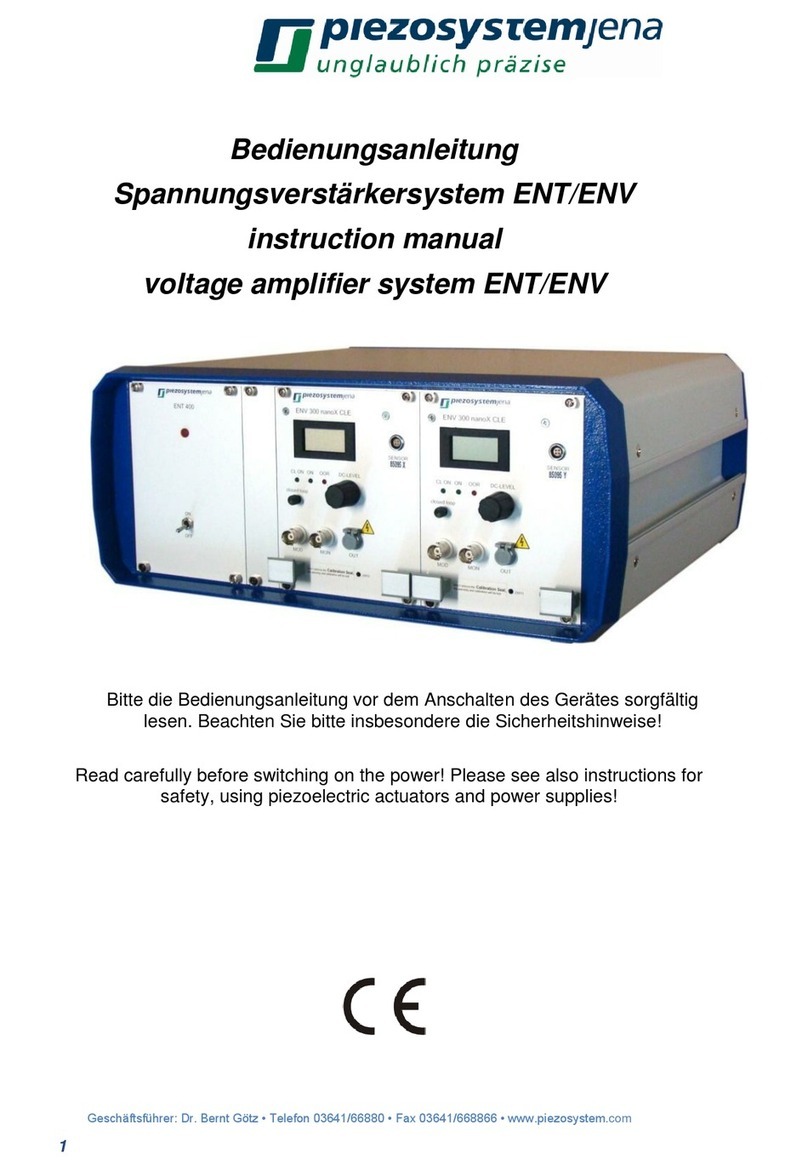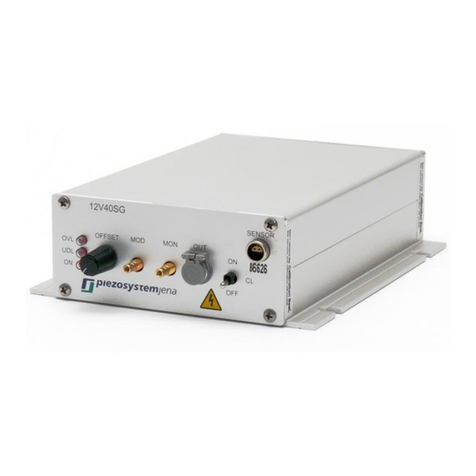Geschäftsführer: Dr. Bernt Götz • Telefon 03641/66880 • Fax 03641/668866 • www.piezojena.com 29
Table of contents
1introduction.................................................................................................................30
2certification of piezosystem jena.................................................................................30
3declaration of conformity.............................................................................................31
4purchased part package .............................................................................................32
5instructions for using piezo electrical elements and power supplies............................32
6safety instructions.......................................................................................................33
6.1 installation, power supply............................................................................................34
6.2 operation.....................................................................................................................34
6.3 maintenance and inspection .......................................................................................35
6.4 environmental conditions............................................................................................ 35
7NV40/3, NV40/3CLE, NV120/1 and NV120/1CLE.......................................................36
7.1 key words ...................................................................................................................36
7.2 user elements / connections .......................................................................................37
7.2.1 front panel...................................................................................................................37
7.2.2 back panel..................................................................................................................38
7.3 introduction.................................................................................................................38
7.3.1 block diagram.............................................................................................................39
7.3.2 amplifier with integrated feedback controller............................................................... 39
7.3.3 amplifier without integrated feedback controller..........................................................39
7.4 initiation ......................................................................................................................39
7.4.1 main supply voltage....................................................................................................39
7.4.2 connecting piezo actuator...........................................................................................40
7.4.3 graphic display NV40/3, NV40/3CLE ..........................................................................40
7.4.4 graphic display NV120/1, NV120/1CLE ......................................................................40
8handling......................................................................................................................41
8.1 manual control............................................................................................................41
8.2 controlling via modulation / monitor.............................................................................41
8.2.1 modulation..................................................................................................................41
8.2.2 monitor NV40/3CLE, NV120/1CLE .............................................................................41
8.2.3 monitor NV40/3, NV120/1...........................................................................................42
8.3 controlling via interface...............................................................................................43
8.3.1 configuration RS232...................................................................................................43
8.3.2 command list overview................................................................................................44
8.3.3 commands..................................................................................................................45
8.3.4 examples....................................................................................................................47
8.3.5 calibration of encoder .................................................................................................48
8.4 technical data .............................................................................................................50
8.5 pin assignment ...........................................................................................................51
8.5.1 output connector for actuator D-SUB15pin..................................................................51
8.5.2 MOD/MON connector D-SUB25pin.............................................................................51
8.5.3 RS232 D-SUB9pin.....................................................................................................52
8.5.4 USB 1.1...................................................................................................................... 52
8.5.5 main supply voltage....................................................................................................52
9trouble shooting..........................................................................................................53
10 your notes................................................................................................................... 54
